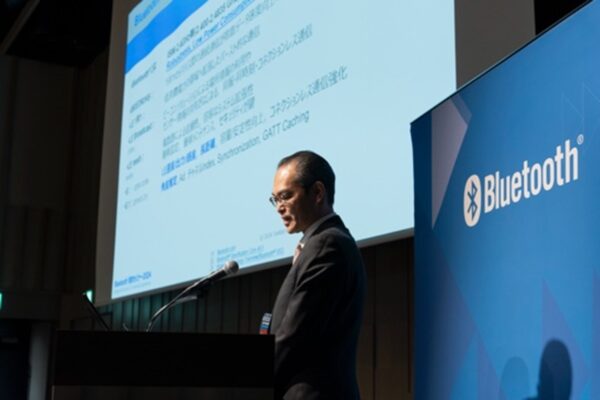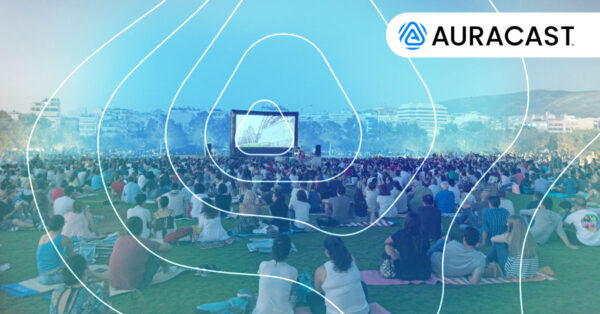Toshiba encourages Japanese member companies to help drive Bluetooth® standardization

Bluetooth® has become an integral technology across a diverse range of industries, from audio streaming and wearables to solutions that drive residential, commercial, and manufacturing innovation; and new features are being released each year. In fact, the Bluetooth Special Interest Group (SIG) is currently advancing over 50 feature development and standardization projects aimed at improving Bluetooth technology even further.
At the Bluetooth Tokyo Seminar, industry experts presented the latest information about Bluetooth technology to a full audience, focusing on the increasingly popular Bluetooth® LE Audio and the new Bluetooth capability it supports, Auracast™ broadcast audio, as well as Bluetooth® Channel Sounding, a high-precision distance measurement feature introduced in Bluetooth Core 6.0.
Dr. Katsumi Adachi from Toshiba, a member of the Bluetooth SIG Board of Directors, spoke on Bluetooth® technology trends and future focus areas, discussing the technical evolution of Bluetooth connectivity and its future direction. During his presentation, Adachi encouraged Japanese member companies to further participate in standardization activities.
Bluetooth evolution and roadmap
In terms of topology, Bluetooth® LE has evolved from Bluetooth® Classic’s peer-to-peer topology to include point-to-point, broadcasting, and mesh, enabling one-to-one, one-to-many, and connectionless communication.

Within the last decade, the Bluetooth SIG adopted a wide range of new features, including Bluetooth® LE Audio, Bluetooth Direction® Finding (AoA/AoD), Bluetooth® Mesh Networking, high-speed transmission, long-range communication, and enhanced advertising. In 2024, Bluetooth® Channel Sounding was released to support a range of new use cases, such as enhanced Find My solutions and digital keys.
The Bluetooth SIG is currently working to advance four major specification development projects:
- Higher data throughput (HDT): Improves efficiency and speed, among many other exciting enhancements, enabling multi-channel/high-quality audio
- High-frequency band support: Increases speed, reduces latency, and improves position accuracy
- Bluetooth® LE Audio enhancement: Enhances Bluetooth® LE Audio usage and Auracast™ usability through hi-res/lossless audio, surround sound, voice assistants, exposure countermeasures, and improves Auracast™ coverage/capacity/discovery features
- Ultra-low latency HID: As one of several exciting advancements, it introduces enhanced gaming use cases, such as AR,VR,MR, etc.
The value of Auracast™ broadcast audio
Auracast™ broadcast audio has emerged as the premier solution for audio-sharing applications, and this new Bluetooth capability has become the global standard for audio broadcasting.

With Auracast™ broadcast audio, you can share the audio from movies or music with friends and family, join a broadcast to listen to the audio from silent TVs in gyms, bars, waiting rooms, etc., and hear your best when in noisy public venues like transit centers and conference halls. The business models emerging from these applications are expected to reach a wide range of markets, including public services, commerce, entertainment, business/education, and more.
Analysis of various business models suggests that one of the greatest values Auracast™ broadcast audio provides lies in its ability to be used anytime (on-demand), immediately (improvisation/responsiveness), and for anything (flexibility). “Currently Auracast™ broadcast audio focuses on voice and music broadcasting, but it can also be used to broadcast location-dependent information,” said Adachi. “We want to initiate this usage from Japan.”
Future direction and encouragement for standardization
Bluetooth continues to expand the boundaries of what wireless solutions can achieve, driving high-speed connectivity, supporting low latency, and powering multi-connection capabilities. And since Bluetooth is a standardized technology, when you see the Bluetooth logo on a device, you know that it will seamlessly connect with other Bluetooth solutions.
Standardization is key to creating trends and enabling business to enter the growth phase early. Format, protocol, and security-related regulations are necessary to safely and securely obtain information in public and commercial spaces, and standardization is essential for easily obtaining that same information anywhere in the world. Dr. Adachi encourages Japanese companies to actively participate in Bluetooth working groups, obtaining early information while cooperating in standardization efforts.